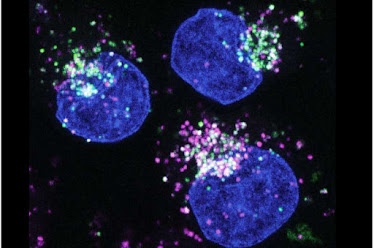Breaking down proteins: How starving cancer cells switch food sources

Breaking down proteins: How starving cancer cells switch food sources Cancer cells often grow in environments that are low in nutrients, and they cope with this challenge by switching their metabolism to using proteins as alternative "food". Building on genetic screens, an international team of scientists could identify the protein LYSET as part of a pathway that allows cancer cells to make this switch. Their findings are now published in the journal Science. Amino acids are the building blocks of proteins and key nutrients for cell growth and proliferation. Understanding how cells utilize amino acids in different environments is a central question in basic biology and cancer research. Tumor tissues often have a limited blood supply, and to grow under such conditions, cancer cells switch their metabolic activities. In particular, they switch from taking up nutrients delivered by blood vessels to exploiting alternative nutrients, such as breaking down surrounding proteins as ...


